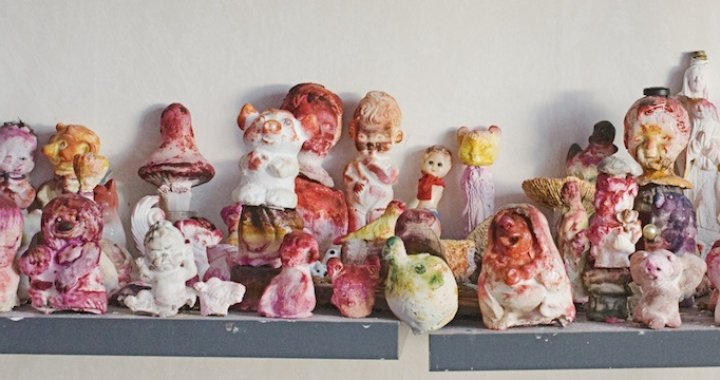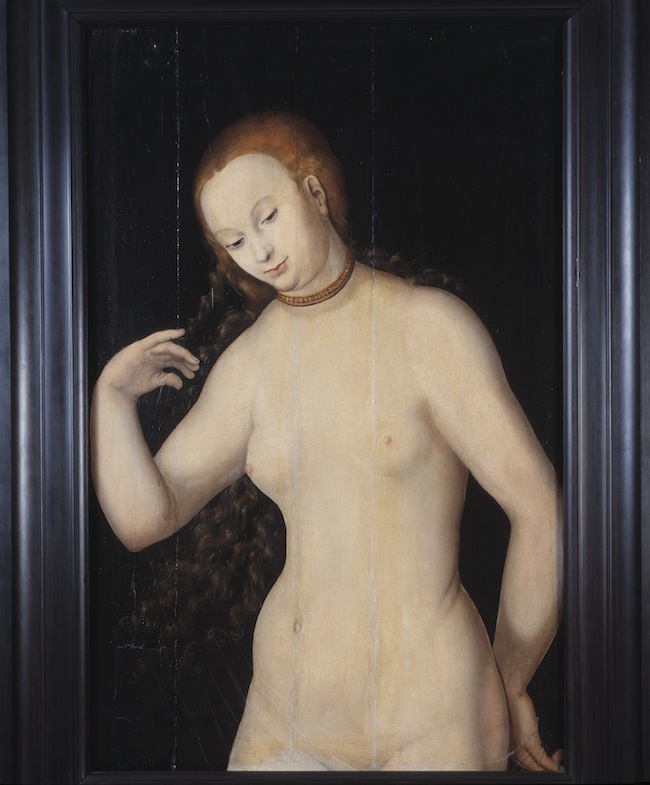
The narrative of dreams and nightmares
Alida Ivanov
31/01/2013
“Stargazer”
Sven-Harry’s Art Museum, Stockholm
26 January – 31 March, 2013
An artist possesses, on the one hand, the power to change how we see reality, and on the other hand, the ability to trick us into see something that isn’t there. A world can be created through the expression and the imagination of an artist. In the exhibition Stargazer at Sven-Harry’s Art Museum, in Stockholm, Swedish artist Karin Mamma Andersson invites us into a world just like that.
As a curator, Karin Mamma Andersson really amazed me. When I saw the list of the artists, I did get worried. This extensive list consists of 21 artists, both Swedish and international, who have used 21 different techniques of expression; we find everything from video, to installation, to paintings, drawings and the list goes on. All of these artists have different aesthetic languages and in some ways they also have different goals in their work. But, there was a strange and subtle thread through the whole exhibition and that is the aesthetic of Karin Mamma Andersson: the uncanny of everyday life, homeliness with an underlining of the darkness and the disquiet landscapes.
The spaces in Sven-Harry’s Art Museum are incredible. They work almost as a maze where you can discover whatever they hold. When you enter the museum, you enter the gift-shop first, which is an honest way of viewing the present economical situation of museums. It also works as a reality check when you leave.
Afterwards you are guided into a white cube and then into the next space, which is a windowed rectangle. The show continues up the stairs to several smaller spaces: all of them actually help the narrative of the show. Here you may ask, with all of the different aesthetics and artists in this exhibition, what is the narrative of it?

Sonja Nilsson, The Silence of the Lambs
Among the artists we find a video installation by Sonja Nilsson called The Silence of the Lambs. The title is taken from the movie with the same name. In the film there is a scene where the serial killer Buffalo Bill dances in women’s clothing, the artist reenacts this. The video is seen in a dollhouse-sized room in between two walls. All of a sudden, it flashes and you’re blinded. The image is left stuck on your retina for a few minutes. The picture of the figure in a white negligée doesn’t go away even when you close your eyes. It’s an almost claustrophobic, strange, and voyeuristic experience that is beautiful and scary at the same time.
Klara Kristalova is famous for her sculptures, but mostly for her ceramic, glazed figures. These are based on myths and fairytales and possess childish qualities. The character of the young woman is the one that reoccurs in her work. In this show there is a borderline piece called The Elephant. I call it borderline because it’s a woman, who is called an elephant. There is bodily fixation to it; the girl is chewing on her own nose.

Kerstin Hansson, Verklighetens Folk
Another ambiguous piece in the exhibition is an installation by Kerstin Hansson, Verklighetens Folk (People of Reality). It consists of shelves that are stuffed with plaster figurines in girly colors and glitter. And by stuffed, I really mean stuffed. There is not a single empty space on these shelves. All of the figurines are turned towards the visitors and they look at them with their happy, but dead eyes. This is probably the prettiest work, from afar, but when you get closer you see the dust and the obsessiveness of the piece.
The exhibition has both newer and older works; one of my favorites among these is Lucas Cranach’s Venus from the 16th century. This is one of many Venuses. They all have different hairstyles, with or without a cherub, background scarves, but they’re all incredibly beautiful. The one in this show is a shy one; she has no direct eye contact with the beholder (a classic case for the male gaze). But there is something tranquil about her and it creates a balance with other more turbulent works.

Lucas Cranach, Venus
Henry Darger probably stands for one of the more unsettling works. In this undated, Boschian drawing we see an endless array of violence, abuse, pedophilia and just plain darkness. In its beige, pinkish tone it’s hard to process what you actually see. This is something that happens with many of the works in the show, they have this dual quality to them.
By looking at all the individual works in this show, it can be hard to find a narrative. But this show does have one – it’s the narrative of dreams, or in some cases nightmares. Everything makes sense in a nonsensical way. But you just have to go with the flow and accept the inner logic of Stargazer.
Artists included in the exhibition: Francis Alÿs, Fikret Atay, Dick Bengtsson, René Clair, Lucas Cranach, Henry Darger, Marcel Dzama, Paul Gauguin, Kerstin Hansson, C.F. Hill, Åke Hodell, Lisa Jeannin, Ernst Josephson, Bruno Knutman, Klara Kristalova, Sonja Nilsson, Tal R, Ladislas Starevich, Nino Strohecker, Fruls Tilpo, Johnson Weree.